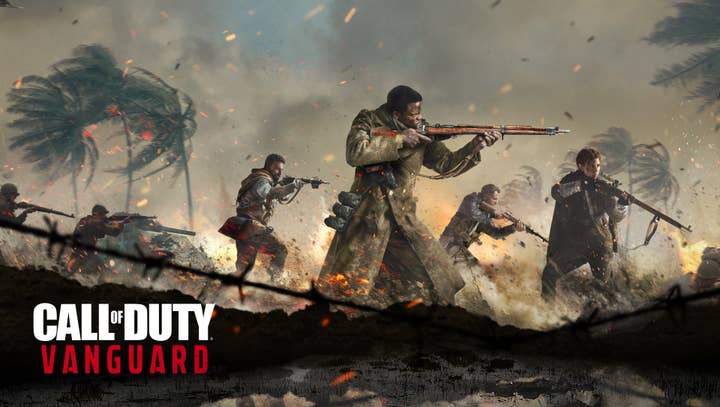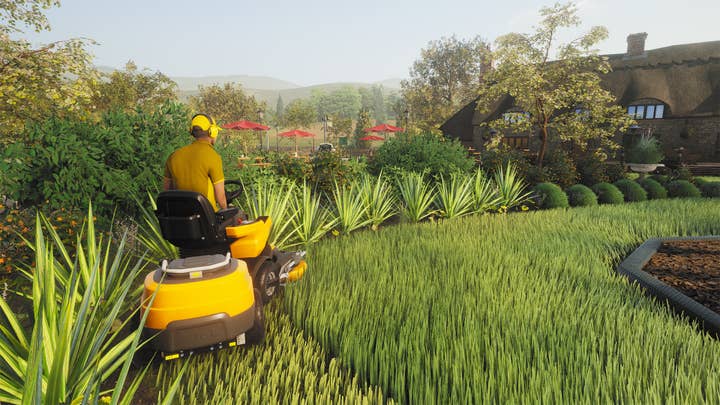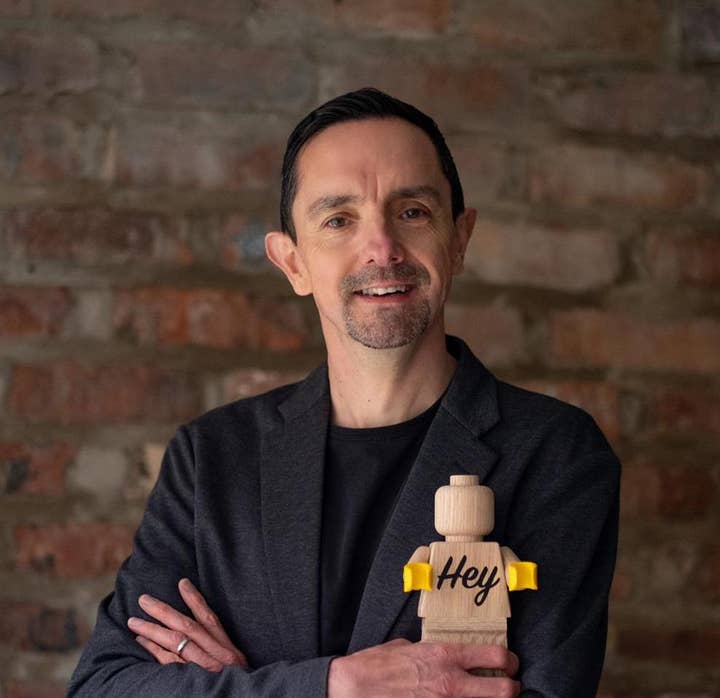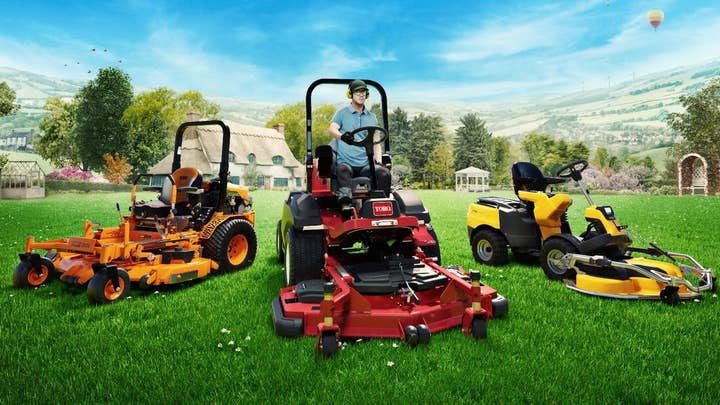Making distinctive game brands
Consultants and marketing experts suggest a process that will help ensure your new gaming IP truly stands out
When a product is intrinsically entertaining, it can be easy to assume that an attractive and compelling brand will naturally develop around it. However, a lack of focus on actively creating a distinctive brand may mean that no matter how entertaining your game is, it doesn't stand out in a crowded marketplace.
In this article, we'll explore one potential route map to creating distinctive IP.
Why is a distinctive brand important?
A clear, consistent, distinctive brand leads to a better chance of success. There's less to muddy the waters. Clarity creates cut-through in the noisiest of environments. This can be true when pitching to publishers, gaining share of voice in-house, at launch or maintaining a live game.

To help players connect with your game, you need a clear offer that dispenses with the superfluous. It's not about denying all the great things your game offers but understanding that consumers (and backers) respond best to clear, consistent and unambiguous ideas. So keep it simple and you'll have an improved chance of standing out.
"When you're in a market with over ten thousand games coming out a year, two hundred a week, we have to work even harder," says HeyStephenHey consultant Stephen Hey. "Anything that you can do to be distinct, to provide a new experience, is essential. It is not an option. "
In a highly competitive market (with a looming recession) distinctiveness and maintaining a best practice approach improves the probability of you creating and maintaining share of voice, mind and sales. This applies whether you're a major publisher or fledgling indie developer.
Why 'distinctive' and not 'different'?
Surely 'different' is better than just being distinctive? The reality is that being different is nearly impossible. There are few brands that have ever been truly different. Most successful brands are built on a succession of linear category improvements and successes. You can work backwards from PUBG, Call of Duty and Far Cry through Quake, Castle Wolfenstein and, I guess, 3D Monster Maze on the ZX81 as an example.
However, being distinctive is available to all games, whether you're sitting comfortably in a crowded category or you're genuinely doing something new.
"You have to be distinctive within your segment," says Johnny Coghlan, director of product marketing at Star Citizen developer Cloud Imperium. "It's the most important factor. You are not set up to succeed if you're not distinctive. "
The following three-part approach suggests a best practice roadmap to making sure your brand does and can stand out, to attract backers and ultimately players.
The three stages are:
Stage one: Where are you now?
Stage one is having a reality check on where you're up to. Start with an internal brand audit, then apply the same audit to your competitors and comparators. Capture internal views on the personality of your game, review market opportunities. Use all of the above to critique your current position and how distinctive your game really is.
The internal brand audit
Collate and review any existing brand materials. If in early development this might be character art, narrative, gameplay design, art direction or simply an early treatment.
If further down the development cycle or already launched then use any and all material that has been used to promote the game from logo, through art and web or social activity through to video and community content.
"Anything that you can do to be distinct, to provide a new experience, is essential. It is not an option"
Stephen Hey, HeyStephenHey
Competitors and comparator desk research
Chart available visual and communication materials from those you see as direct competitors and comparators. Comparators may be titles that although not direct competitors may share a similarity in art direction, gameplay style, characterisation or theme. Stephen Hey suggests using game tracking websites such as www.games-popularity.com to map out competitors and identify what is making them distinctive. This can be especially useful if using the 'wishlist' charts to spot themes.
Internal stakeholder analysis
Gather opinions internally on the brand that you're trying to make. Capture what personality, tone or attitude are you trying to project. This is always an interesting part of the process as there can often be a fair amount of variance even though everyone is working on the same game.
"When we were developing Lawnmower Simulator we were actively looking to find a space in the simulation genre that resonated with players," says David Harper, managing director of Skyhook Games. "To make them stop and think. We purposely set out to do that."

Market barriers and opportunities
Review the market as a whole and any future trends that are surfacing. Are there any clear barriers to growing your brand? What opportunities may exist that you can take advantage of?
Critique and conclusions
After mapping these key pillars the hard part is marking your own homework. Critique each of the elements above, especially how you think you're performing against competitors and comparators. Ask yourself:
- Do we have a distinctive personality?
- Is it consistently applied?
- What can we learn from competitors/comparators?
- What can we change, improve or stop doing to improve our distinctiveness?
Use a simple 'one to ten' scoring system to mark how well your brand is doing against the identified competitors. Doing this as group exercise can be useful too in building a consensus for future improvements and gently flushing out where you may need to focus efforts.

Stage two: Where are we going?
Now you know where you are. You can start working on where you need to go in creating a distinctive brand.
"You don't have to be completely different," Coghlan advises. "You can develop and improve upon existing games. Take a successful game like Angry Birds. It is not technologically groundbreaking or unique in its feature set. But in an incredibly crowded genre of accessible mobile games, the cartoon birds, audio and star system make it stand out."
Again, workshopping the following approach as a group exercise can be really useful and help build a shared vision. Use your stage one findings as stimulus and work through the following:
Brand warfare
Where do (or can) you win and lose? What are going to be the winning approaches that you can genuinely beat the competition with?

What do we want to Keep, Ditch or Develop?
What works and what doesn't? There's always emerging brand elements that simply work, motivate the team and sit comfortably with your aims. Focus on these and ditch those that aren't working.
Harper says that Lawnmower Simulator started as being very competitive. It was time-based and a challenge that you could fail. But this didn't feel right to the team and as a group they decided to pivot halfway through development. They took all of the time constraints out so you could no longer fail. It was now somewhere you could feel safe, a zen game. That was their big moment, realising what the truth of their game was. Proactive internal reflection and discussion helped find a distinctive position.
Agree on audience portraits
Write-up a summary of your ideal player: what experience they're looking for, what motivates them, what else do they play or have interests in. Stay away from standard socio-demographics – it really doesn't matter what they may earn or how old they are. Focus on what you think motivates them and why they might fall in love with your game. Importantly, ask yourself what do you want them to stop playing to create the time or money to play your game.
"You don't have to be completely different. You can develop and improve upon existing games"
Johnny Coghlan, Cloud Imperium
Stephen Hey suggests dipping your toe in the market. Release some concept art, try a low-cost social campaign and see what the response is. If you're already launched, reach out to the community and ask questions. However, remember that with any kind of testing that there's a big difference between what people say they'll do and what they actually do. It doesn't cost a player any money to post a positive opinion or click on an ad. Treat any test findings with care.
Scale of personality of the brand
Plot where the personality of your game sits on various scales, such as serious to frivolous, traditional to novel and hardcore to casual.
Human senses
Describe the game in terms of smell, touch, taste, sight and sound. This can be a seriously effective way to get to the heart of how a brand can be distinctly represented. A hardcore shooter with simulation elements may feel like steel and taste like blood in the mouth. Whereas a cutesy JRPG may taste like morning coffee and smell like fresh cut grass.
Keywords that define the brand
Use all of the above workings to describe your game in as few keywords as possible. This helps focus on what really matters and will also help with the final stage of writing a value proposition.
Visual mood board creation
Create a master mood board as a group or workshop exercise. Use visuals from any source that help you communicate to each other what's in your mind's eye and develop a visual consensus. You can use any lack of consensus to dig deep into and define what you want the game to be. This is sometimes difficult, but nailing it will create a clear approach that you can sense check later decisions against.

Stage Three: The route map
Finally in this stage write your value proposition. Some call this an elevator pitch or X-Statement. Whatever you call it, you need to work out what your game offers that makes it distinct – your game's 'value proposition.'
In the previous stages you've identified what drives your players, where you stand out from competitors and where you can win. Your game's value proposition should be a simple summary of this. Try and define it as a sentence or short paragraph. Use the following as a guide to its structure.
- THIS GAME IS – what the game does
- FOR – description of your audience
- WHO WANT – player motivations and needs
- WE – highlight where you win. "We are a compelling game because…."
- THAT – the benefit of playing and experiencing your game, the 'value' provided
- UNLIKE – overt differentiation from competition
- BECAUSE – statement emphasizing your vision
The following is an example or the structure in action.
This game is a first-person team shooter for casual players
Who want to pick up and play for short bursts of fun
Who want a game that makes them laugh and smile
We are their game of choice because of our simple yet addictive game style
That gives players a quick fix of colourful fun that is easy to master
Unlike other online shooters that are ultra-competitive and almost impossible to win
Because we believe that gamers should be rewarded for playing, not just winning
"Take emotion and ego out," says Coghlan. "Try to look at things objectively. Beta testing and evaluation is important. I'm not always the target audience so I'm happy to be surprised."
Create your brand bible
I'm sure that brand guidelines may already exist or be created at some point. They have a use but don't always help with delivering distinctiveness, only consistency.

Use the content from this process to create a short, punchy, memorable brand bible that contains the key findings, background, thought process and, of course, value proposition. Put it up on the wall, make it visible in whatever your working space is whether remote or in-person. Refer to it positively when game development or marketing plans support it. Use it to induct new team members or third parties working on your game.
Now when you're planning on what and how to pitch, stream, talk about in interviews, hero on your website or apply to social content, you'll have a clear, distinctive message. Communicate the few things that really make you stand out. Mine these areas consistently for both game content ideas but also in marketing collateral – build a consistent picture over time, stand-up for the key messages that make you different and therefore remembered.
Focus on optimizing the distinctiveness you already have. Then scale that exponentially across your game, community relations and all marketing channels.
In summary
- Do your homework. Review where you're at, where you're heading, and genuinely question whether you've done all the background work you need to.
- Collectively define a clear value proposition, X-statement or elevator pitch (whatever you want to call it). Make it creative, commercial, competitive and compelling.
- Be consistent. At every product development and marketing decision point ask yourself 'Does this support the value proposition?'
- Identify signature actions. Create distinctive actions for your brand based clearly on the value proposition and keep on doing them, again and again.
- Own your proposition. Go wide and deep into your proposition, immerse your brand in everything related to it.
- Be engaging. Tell stories, use humour and emotion. Be a brand that's interesting to be around.
- Games development is a long and winding road, things change and focus can shift. Make sure everything lines up with the value proposition. It's never too late to pause and review.
A note on creativity and gut feel
This process is designed to neither replace genuine creativity nor shackle it to a formula. It will, however, flush out those ideas that don't make the mark.
In such a creative industry, your gut feeling about a game being 'right' or not is probably correct. This process can help you elevate that gut feel into actionable activity that brings your idea to life and maintains your vision through the trails of development and publishing.
"To me it felt 'right' to develop a game about cutting grass when nobody else had done it," said Harper. "There was a lot of scepticism about the idea, it never felt I was going down the wrong avenue.
"That's not to say I'm always right. Which is why we do game jams to see what feels right to other people and explore what I might not have thought about. Once you've got the gut feel you've got to test it."
Someone much cleverer than me said that the first search engine is the human memory. Being distinctive is the ultimate memory maker and the first step to a successful game.
Joe Chetcuti is a brand consultant who has worked with Lego, Chester Zoo and Butlins. Prior to this, he worked in marketing management at Xbox, Atari and Gremlin Interactive.
